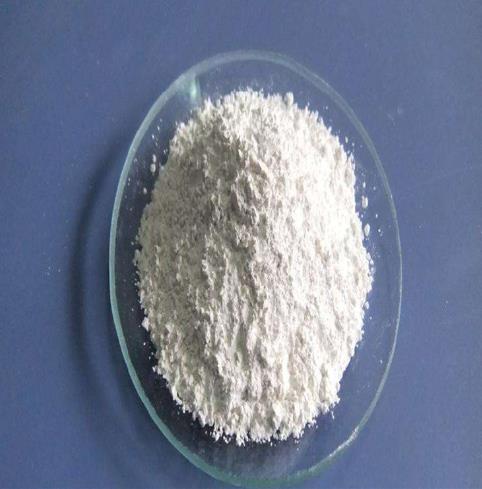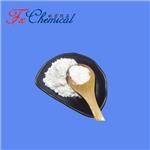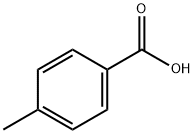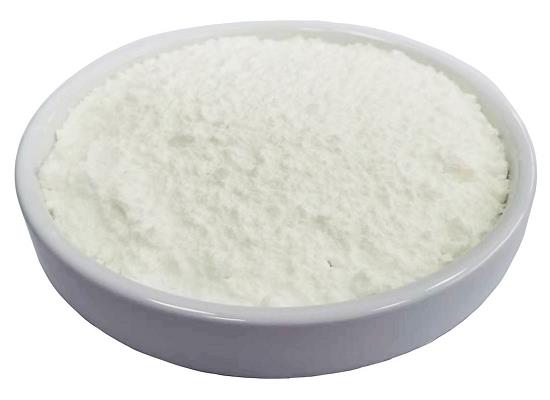The Essential Role of p-Toluic Acid in Chemical Industry: Properties, Applications, and Safe Handling
Introduction
p-Toluic acid, also known as 4-methylbenzoic acid, is a significant compound in organic chemistry. Its chemical structure consists of a benzene ring with a carboxylic acid (-COOH) group attached at the para position relative to a methyl (-CH3) group. This structure makes p-toluic acid a simple yet important derivative of toluene, which is widely utilized in various industrial applications. The significance of p-toluic acid lies not only in its chemical properties but also in its role as an intermediate in the synthesis of various chemical compounds, making it a crucial substance in the field of chemical manufacturing and research.

Figure 1 Characteristics of p-Toluic acid
Properties of p-Toluic Acid
p-Toluic acid is a white crystalline solid at room temperature, with a molecular formula of C8H8O2 and a molecular weight of 136.15 g/mol. It has a melting point of approximately 180°C and a boiling point of around 274°C. The compound is slightly soluble in water but readily dissolves in organic solvents such as ethanol, acetone, and benzene. This solubility profile is typical of aromatic carboxylic acids, which generally exhibit low solubility in water due to the hydrophobic nature of the aromatic ring but dissolve well in organic solvents.
The acid dissociation constant (pKa) of p-toluic acid is about 4.36, which indicates that it is a weak acid. This value is close to the pKa of benzoic acid, reflecting the influence of the methyl group on the acidity of the carboxylic acid group. The presence of the electron-donating methyl group slightly reduces the acidity compared to benzoic acid, as it increases the electron density on the benzene ring, making the carboxyl group less likely to release a proton.
Main Components and Synthesis
The primary component of p-toluic acid is the para-substituted methylbenzoic acid itself. It is typically synthesized through the oxidation of p-xylene, an industrially significant process. In this process, p-xylene undergoes catalytic oxidation, often using air or oxygen in the presence of a cobalt-manganese-bromine catalyst system at elevated temperatures. The reaction selectively oxidizes the methyl group to form the carboxylic acid, yielding p-toluic acid as the primary product.
The synthesis of p-Toluic acid can also be achieved through other methods, such as the Friedel-Crafts acylation of toluene followed by oxidation or by the direct oxidation of toluene using strong oxidizing agents. However, the oxidation of p-xylene remains the most economically viable and industrially favored method due to its efficiency and high yield.
Applications of p-Toluic Acid
p-Toluic acid serves as an intermediate in the production of a wide range of chemicals, making it an essential substance in various industrial processes. One of its primary applications is in the manufacture of polyesters, specifically in the synthesis of polyethylene terephthalate (PET). In this context, p-toluic acid is a precursor to terephthalic acid, which is polymerized to produce PET. PET is a widely used material, known for its strength, thermal stability, and recyclability, and is commonly found in packaging, textiles, and engineering plastics.
Beyond its role in polyester production, p-toluic acid is also employed in the synthesis of dyes, pharmaceuticals, and agrochemicals. In the pharmaceutical industry, p-toluic acid derivatives are used as building blocks for the synthesis of various drugs. Its structure serves as a scaffold for the development of active pharmaceutical ingredients (APIs) that exhibit anti-inflammatory, analgesic, and antibacterial properties.
In the field of agrochemicals, p-toluic acid is used in the production of herbicides and plant growth regulators. Its derivatives can act as intermediates in the synthesis of compounds that control plant growth or protect crops from pests and diseases. The versatility of p-toluic acid in these applications underscores its importance in the development of chemical products that contribute to modern agriculture and healthcare.
Storage and Handling of p-Toluic Acid
Proper storage and handling of p-toluic acid are essential to maintain its stability and ensure safety in its use. The compound should be stored in a cool, dry place, away from sources of heat and ignition, as it can decompose at elevated temperatures, releasing toxic fumes such as carbon monoxide and carbon dioxide. It is also important to keep p-toluic acid in a well-ventilated area to prevent the accumulation of any vapors that might pose a health hazard.
Containers of p-Toluic acid should be tightly sealed to prevent moisture from entering, as the compound can absorb water and degrade over time. Moreover, it is crucial to handle p-toluic acid with appropriate personal protective equipment (PPE), including gloves, safety goggles, and lab coats, to minimize the risk of skin contact and inhalation of dust.
In case of accidental spills or exposure, immediate action should be taken to mitigate any potential hazards. Spills should be cleaned up promptly using appropriate absorbent materials, and contaminated areas should be thoroughly washed with water. If inhalation occurs, the affected individual should be moved to fresh air and medical attention sought if necessary.
Conclusion
p-Toluic acid is a fundamental compound in the realm of organic chemistry, with significant applications in various industries, including the production of polyesters, pharmaceuticals, and agrochemicals. Its chemical properties, such as moderate acidity, solubility in organic solvents, and stability under controlled conditions, make it a valuable intermediate in the synthesis of numerous chemical products. The careful storage and handling of p-toluic acid are essential to ensure safety and maintain its integrity for industrial use. As the demand for advanced materials and chemical compounds continues to grow, p-toluic acid will likely remain a critical substance in the development of new technologies and products within the chemical industry.
[1] Pfennig T, Johnson R L, Shanks B H. The formation of p-toluic acid from coumalic acid: a reaction network analysis[J]. Green Chemistry, 2017, 19(14): 3263-3271.
[2] Takwale M G, Pant L M. The structure of p-toluic acid[J]. Acta Crystallographica Section B: Structural Crystallography and Crystal Chemistry, 1971, 27(6): 1152-1158.
References:
[1] PFENNIG T, JOHNSON R L, SHANKS B H. The formation of p-toluic acid from coumalic acid: a reaction network analysis?[J]. Green Chemistry, 2017, 14: Page 3167 to 3430. DOI:10.1039/C7GC01290J.[2] M. G. TAKWALE L P. The structure of p-toluic acid[J]. Acta Crystallographica Section B Structural Crystallography and Crystal Chemistry, 1971, 73 1: 155-174. DOI:10.1107/S0567740871003674.
See also
Lastest Price from p-Toluic acid manufacturers

US $0.00/KG2025-04-21
- CAS:
- 99-94-5
- Min. Order:
- 25KG
- Purity:
- 98%min
- Supply Ability:
- 30tons/month

US $1.00/KG2025-04-21
- CAS:
- 99-94-5
- Min. Order:
- 1KG
- Purity:
- 99%
- Supply Ability:
- 10 mt


